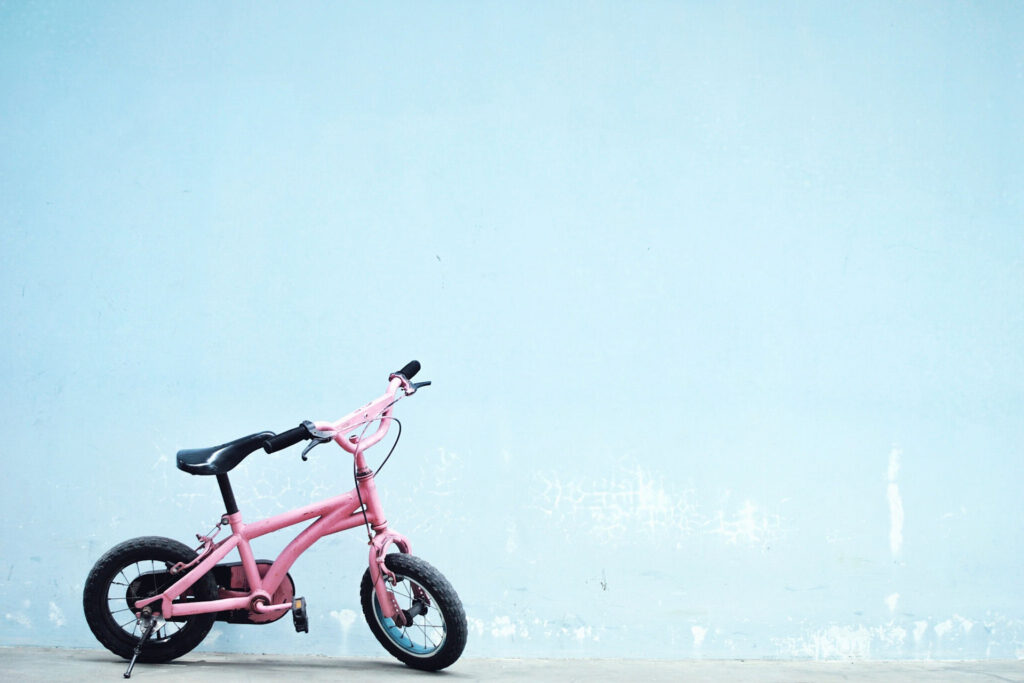Sunshine and warm days are perfect for bike riding, but before you or your kids start pedaling, make sure you’re aware of some important cycling safety measures.
Bike rides in the summertime are a family favorite! Catch sunsets or sunrises together as a family or pack a lunch and ride to the nearest park. Riding bikes can become a great family tradition that keeps your kids outdoors and active, too; It’s both fun and healthy.
There are a lot of benefits of bicycling for everyone. In the long-term, the biggest benefits are increased stamina, muscle toning, and cardiovascular health. Not to mention, biking is easier on your joints than running! There’s something to be said about the mental health aspect of riding a bike, too. Pressing pause on reality and going for a ride offers stress relief and bonding with family or friends. You end up creating some pretty special memories with your kids, too.
On the flip side, riding bikes has just as many dangers. From losing your balance to flies in your eyes or crashing into the bushes, you need to remember safety first! No matter where you are riding, be aware of your surroundings, other riders, pedestrians or vehicles, and protect yourself from accidental harm.
Don’t Thump Your Melon
While South Dakota has no law requiring riders to wear helmets, health professionals strongly encourage it. Not only do helmets offer protection for your head and brain, they can also improve your ability to see and be seen. No more squinting from the bright sun; helmets with visors help block sunlight and reflective strips make you visible to others.
Safety is taught far and near, but in the heart of Rapid City, Monument Health (formerly known as Regional Health) Foundation’s Children’s Miracle Network program launched the “Don’t Thump Your Melon” project to provide proper education, safety presentations, community events, and helmets for the public.
Brian Owen, trauma program manager at Monument Health Rapid City, was a nurse for 11 years and has spent the past 21 years as a paramedic. Now, for the past four years, he has led the advocacy project.
“The number one reason to wear a helmet is to protect yourself from something happening,” Brian says. While you may not think you’re going to crash, sometimes it is out of your control. “Wearing a helmet protects you from crashes, falling off, any vehicular-related accidents, and even random objects hitting you,” he adds.
Find the Right Helmet Fit
Kids might be hesitant to wear a helmet because they are uncomfortable, or they don’t look cool. However, there are numerous ways to personalize the safety accessory. Encourage them by making it a fun project where they can customize their helmets and find the right fit! Grab markers, stickers, or paint and transform a basic helmet into something your child loves. As far as a proper fit goes, it should be neither too loose nor tight.
According to Brian, you need to leave about a finger’s width from your head to the helmet, and the pads on the top and sides of the helmet should rest against your head. If your helmet drops from a minimum of four feet, or you’ve had it for a year, it should be replaced.
Beginning in 2008, the “Don’t Thump Your Melon” program began donating helmets on a regular basis to kids. Any parent looking for helmets to provide their child can call and set up a time to meet with Brian and his staff. They personally ensure that any child in need leaves with a properly fitted helmet and a pamphlet about bicycle safety. In addition to the open invitation for the community, the “Don’t Thump Your Melon” project provides education and donates helmets to three or four elementary schools every year.
In recent years, Brian and his staff have teamed up with Strider Bikes to provide more than 3,000 helmets to students across Rapid City and have begun branching out to other locations in western South Dakota including Spearfish, Sturgis, Hot Springs, and Wall. Since the program began, more than 27,000 helmets have been donated and distributed throughout the Black Hills.
The program is always changing. “It grew and expanded into something we never imagined, and we continue to see more and more interest in the program,” Brian says. In the future, Brian hopes to offer more bicycle safety courses and adult helmet fittings in addition to their current initiatives.
Hand Signals
Teaching the signals for turning and stopping early on is important for kids. While they may not be out on the road quite yet, make them an obstacle course to run through! Extending your left arm straight out signifies that your roadster will be taking a left turn. Bending your arm at a 90-degree angle with your hand pointing toward the ground signifies that you are slowing to a stop, and bending your arm at a 90-degree angle with your hand pointing toward the sky signifies a right turn. If you are worried about confusing the stop and right turn, an alternative signal is to extend your right arm straight out. When your kids signal, make sure they know to perform a “shoulder check.” Similar to when you look over your shoulder checking blind spots before changing lanes in your vehicle, it is good practice to do that on a bicycle before you signal.
Written by Sarah Richards



